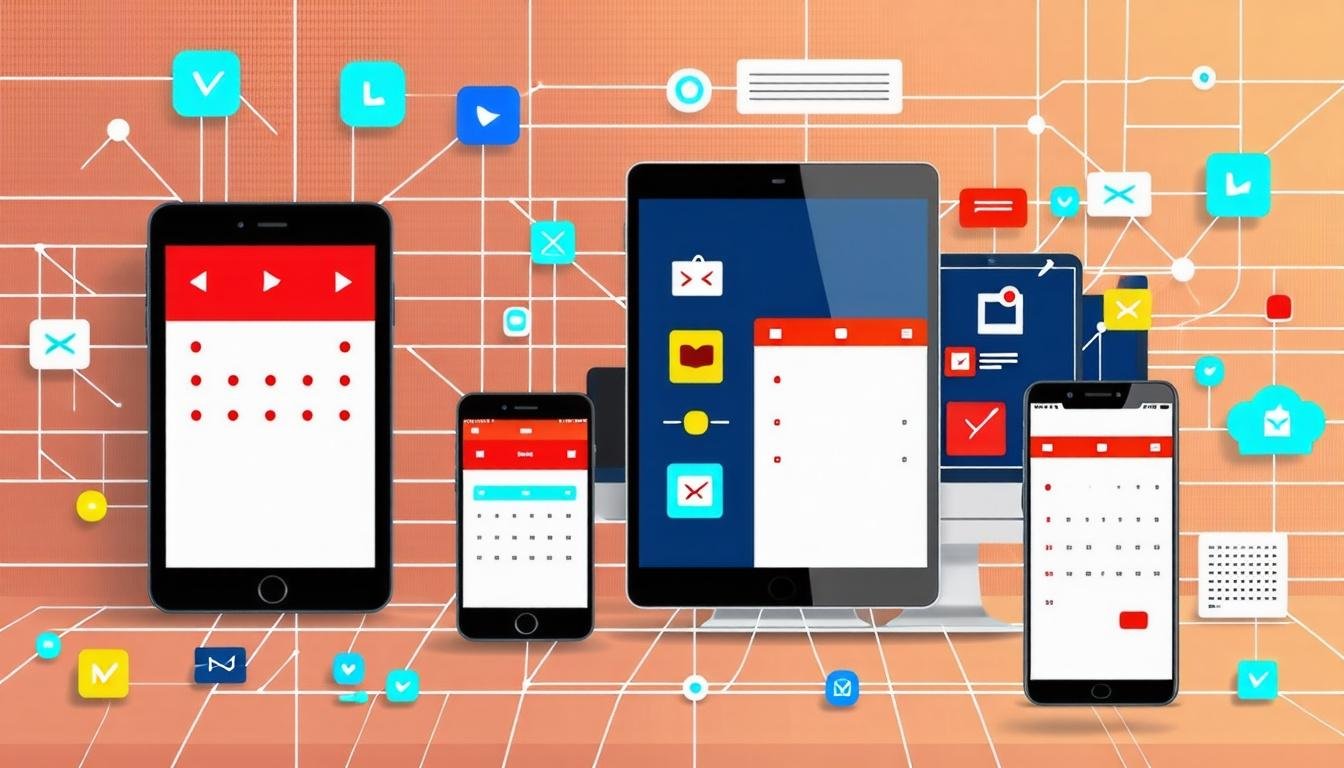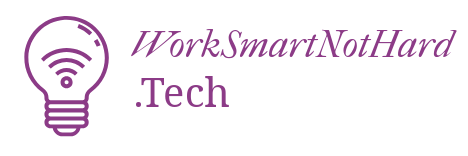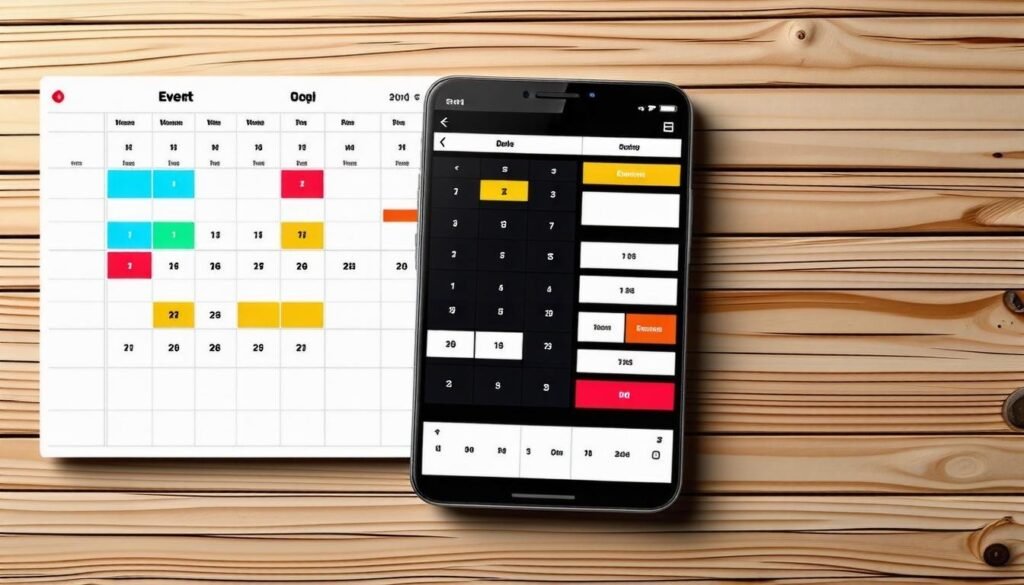Struggling to keep track of significant events and tasks?
A excellent calendar app is your ultimate solution. It empowers you to manage time effectively, set timely reminders, and orchestrate your daily schedule like a pro. With necessary features such as notifications and calendar sharing, you can maintain organization and nurture connections effortlessly.
This article dives into into the best calendar app, highlighting seven indispensable features that improve your scheduling experience. From intuitive interfaces to strong integrations, these tools will lift your productivity and transform you into a scheduling expert. Let’s explore the ideal app that will transform your time management!
Key Takeaways
- Prioritize user-friendly interfaces that reduce the number of taps required to schedule events efficiently.
- Google Calendar stands out for its seamless integration with other Google services and intuitive design.
- Explore advanced options like Fantastical and Informant for iOS, while Simple Calendar Pro offers a strong FOSS alternative for Android users.
- Key features such as automated reminders, task scheduling, and email synchronization remarkably improve the functionality of calendar apps.
User-Friendly Interface and Design

In the area of the best calendar apps, a user-friendly interface is paramount. Finding your way through complicated menus is a frustrating experience that no one wants. Exceptional calendar apps, such as Google Calendar, feature intuitive navigation that simplifies event scheduling and reminder setting. Their visual aesthetics are designed to improve focus, enabling users to manage their time effectively.
Also, top-tier apps emphasize functionality and customization. For example, Fantastical boasts a minimalist design that elevates the user experience while providing powerful features like calendar sync and task management. This ensures easy access to schedules across devices, facilitating seamless cross-platform integration. In the end, a well-designed calendar app transforms chaotic schedules into organized plans, remarkably simplifying our lives.
Cross-Platform Synchronization Capabilities

In the area of cross-platform synchronization capabilities, an ideal app harmonizes our schedules across devices. Imagine this: you update your calendar on a Windows PC, and instantly, your Android tablet and iPhone mirror those changes in real-time. This is the power of a sophisticated calendar application!
Applications like Google Calendar excel in this area, effortlessly syncing across all platforms. Thanks to its cloud storage, you can access your events anytime, anywhere. Conversely, Apple Calendar thrives within the Apple ecosystem, integrating flawlessly with iCloud for a seamless experience.
For users seeking versatility, tools such as Fantastical and Microsoft Outlook Calendar provide complete multi-device support. They make sure that whether managing tasks or scheduling meetings, your calendars remain consistently updated.
In the end, the ideal calendar app depends on your specific requirements—be it task management, event planning, or straightforward reminders. Make your choice with intention!
Task Management and To-Do List Integration
Effective task management and to-do list integration are critical for optimizing productivity. Tools like Planner Pro, available for just $5 a year, allow seamless organization of tasks and schedules. This app synchronizes to-do lists with calendars, ensuring deadlines and reminders are never missed. For example, when a task is created in Planner Pro, it automatically populates in the calendar, providing a clear visual of your workload.
Leading calendar applications, such as Google Calendar, offer customizable views—daily, weekly, and monthly—to match your planning preferences. These platforms not only streamline task organization but also improve team collaboration through shared calendars. Picture working on a project with defined deadlines and collective responsibilities, all tracked in one centralized location. This integration promotes superior time management and mitigates the confusion of disorganized notes and reminders.
Utilizing these productivity tools can transform your approach to project planning and goal setting. By prioritizing tasks and implementing effective scheduling strategies, achieving your objectives becomes remarkably more manageable.
Automated Reminders and Notifications
Automated reminders and notifications are necessary tools for enhancing productivity. A strong calendar app allows us to manage our schedules seamlessly, ensuring we never overlook significant events. For example, Google Calendar stands out with its event reminders, which alert us precisely when we need them. Picture receiving a notification just before a critical meeting or impending deadline—it’s a game changer!
These reminders offer extensive customization options. We can choose to receive alerts via push notifications or email, testing us organized and proactive. This level of task management not only sharpens our time management skills but also alleviates stress. As we balance different commitments, a dependable digital planner like Google Calendar or Microsoft Outlook can remarkably improve our event planning efficiency. Interested in mastering effective strategies?
Explore smart strategies that can propel your success!
Incorporating automated reminders into our daily routines is critical for optimizing productivity. By utilizing these tools, we can concentrate on what truly matters—achieving our goals with confidence!
Calendar Sharing and Collaboration Features
Calendar sharing and collaboration features are critical for boosting productivity, particularly in managing group events and team projects. Tools like Google Calendar and Microsoft Outlook Calendar make easier seamless schedule coordination, ensuring all participants remain informed. These applications allow the creation of shared calendars, allowing for real-time updates and availability sharing.
Key features include:
- Event Management: Effortlessly schedule meetings and monitor deadlines.
- Notifications: Receive timely reminders for upcoming events to stay organized.
- User Permissions: Manage access levels, determining who can view or edit the calendar, so ensuring privacy and security.
Integrating these collaboration tools into daily workflows can remarkably improve time management and in general efficiency.
Recurring Events and Customization Options
Managing our busy lives becomes remarkably easier with recurring events and customization options in calendar applications. Picture scheduling a weekly study session or a monthly family dinner without the tedious task of manual entry each time. For example, Google Calendar enables users to set daily, weekly, or yearly recurrences with just a few taps, providing necessary flexibility for effective time management.
Customization options further improve user experience. Personalized notifications make sure that significant events never slip through the cracks. Employing color coding for events allows for quick visual differentiation between different activities, transforming our calendars into both functional and aesthetically pleasing tools. Applications like ClickUp and Apple Calendar seamlessly integrate with other productivity tools, facilitating effortless synchronization of tasks and events.
The right calendar app not only empowers us to stay organized but also enables effective time management and customization tailored to our individual needs.
Event Planning and Scheduling Flexibility
In the area of event planning, leveraging the right tools is critical for achieving optimal scheduling flexibility. A standout option is Google Calendar, which revolutionizes time management with its user-friendly interface. This tool seamlessly syncs appointments across devices, ensuring you stay organized and informed.
Google Calendar’s month view distinctly displays event titles, providing clarity that many other applications lack. This feature is critical for effective event coordination and task organization. Additional functionalities, such as appointment reminders and availability tracking, further increase productivity and streamline planning processes.
In an era where digital scheduling is indispensable, adopting tools that improve meeting management and group scheduling is necessary. Remember, mastering time management is the cornerstone of success!
Mobile App Accessibility and Functionality
Exploring mobile app accessibility and functionality reveals that top calendar apps remarkably improve our scheduling experience. For example, Google Calendar emerges as the premier free choice for teams, featuring seamless calendar integration and customizable notifications. Its color coding functionality allows for effortless visual organization of tasks and events.
Plus, apps like Morgen Calendar excel in cross-platform compatibility, enabling users to manage schedules across multiple devices. With strong voice command capabilities and screen reader support, these accessibility features empower users with disabilities to steer with ease. The user interface prioritizes mobile usability, ensuring an intuitive and engaging experience.
For those in search of a whole solution, the best calendar apps often integrate task management and event sharing functionalities, further boosting productivity. In the end, selecting the right calendar app can transform how we organize our time and commitments.
Widgets for Quick Access and Overview
Widgets for quick access and overview can remarkably improve productivity, particularly through the use of an effective calendar app. Google Calendar stands out with its five adaptable views: schedule, day, three-day, week, and month. This versatility meets different scheduling demands, solidifying its status as a premier tool for time management.
Plus, platforms like Calendar.com offer seamless appointment management through integrated features. The user interface plays a pivotal role; complex designs can impede efficiency. For example, our experience with Fantastical and Readdle Calendars revealed that their complicated interfaces necessitated excessive tapping for straightforward tasks.
Customizable widgets lift the digital calendar experience by providing immediate access to reminders and notifications. For a deeper exploration of the best options available, refer to this complete guide.
Integration with Other Productivity Tools and Services
Integration with productivity tools elevates the functionality of top calendar apps. For example, Google Calendar serves as more than just a scheduling tool; it acts as a central hub within the Google Workspace ecosystem. This integration allows users to manage emails, tasks, and events seamlessly, remarkably enhancing workflow optimization.
Similarly, Microsoft Outlook offers strong API connections with numerous thirdly-party applications. This capability facilitates efficient task management and event planning. Imagine this: scheduling a meeting while automatically dispatching reminders to your team via integrated collaboration tools. Such features streamline processes, making daily operations more manageable.
In the end, leading calendar apps not only help users track their schedules but also increase in general productivity through intelligent integrations. Accepting these tools paves the way for a more organized and efficient life.
Summing up
Choosing the ideal calendar app is akin to selecting a reliable ally in the chaos of modern life. Necessary features such as seamless integration, customizable reminders, and intuitive interfaces empower us to manage our schedules effectively. Google Calendar stands out for its strong connectivity with different tools, simplifying the planning process. By selecting the right app, we can master our time management, transforming each event into an opportunity for success.

